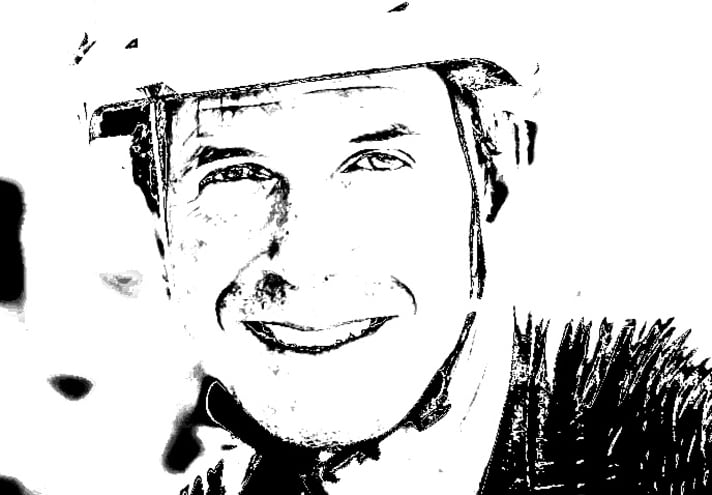
Tour de France 2024 - Stage 1: Florence - Rimini | 206 Kilometers

The first stage is a blast. After 28 kilometers, the roll-in to the 111th Tour de France is already over and the first of countless climbs looms ahead of the riders, which will add up to 3600 meters in altitude. The first climb is only 930 meters and the average gradient of 5.1 percent over 12.5 km is not huge. But from kilometer 38.9 onwards, it gets quite steep in places. The peloton will not arrive at the top of the Col de Valico Tre Faggi as a whole. Two races are to be expected: the one for the stage win and the first yellow jersey as well as the first battle between the riders for the overall classification. Whether breakaways can get away at all will depend on how the riders for the general classification act. A defensive tactic seems most likely. The Tour de France cannot be won on this first stage, but it can be lost. This will put pressure on the favourites and make it difficult for breakaways to get away from the top riders.
Will Tadej Pogacar attack on stage 1?
The race is expected to get really hot from kilometer 130 onwards. Four climbs have to be overcome in quick succession, of which the first is the hardest. Narrow roads and poor asphalt make the journey up and down tricky. In principle it is a nervous classic route of the Liège Bastogne Liège format. It is therefore to be expected that the classic riders in the field who are not competing in the overall classification will be active here. But the climb to the Cote de Barbotto will be too long for the classics king Mathieu van der Poel. If things get going here, all-rounders who are strong climbers have an advantage. Tadej Pogacar could ignite the turbo here. No rider in the field can be rated as stronger than the overall favorite.
So much for the tactical tableau. But what does that mean for the material on today’s stage? After all, this is the tech briefing. We want to give a feel for what questions the race engineers are facing, what options are in play and which teams may have better cards than others based on their equipment.
Who is better off today? A rider who can choose between climbing and aero bikes, or one who doesn't have to worry, like Primoz Roglic, because he rides one bike for everything, the Specialized Tarmac SL8, named the best road bike in the world by Tour Magazine?
3.600 meters climbing? A climbing bike has to be optimal, right? In order to provide an answer to this question, we assume in our simulation that there is actually an open exchange of blows at the Cote de Barbotto and that the 70 kilometers to the finish are driven at full speed. Which bike would be the fastest under these conditions?
Number of the day: 2:39 minutes
The slowest bike in our analysis, the Cervelo R5, loses 2:39 minutes compared to the fastest, the Canyon Aeroad CFR. The real difference is probably a bit bigger, as the Canyon has been revised and is presumably a bit lighter than it appears in our list. We’ll update the weights as soon as we’ve had bikes on the scales in the paddock. For today’s calculation, however, these subtleties are not decisive. The simulation clearly shows that the aerodynamic attributes have more effect than a little less weight on a longer run.
The (almost) entire field at a glance*

*) The calculations are based on the bikes tested by TOUR in the laboratory and wind tunnel. The bikes at the Tour de France may differ in some details. Of course, we have also not yet been able to examine last-minute prototypes. Background to the simulation.
In the overall standings, the aero bikes are mathematically far ahead. The final 26 downhill to flat kilometers played a decisive role in this. If you want to save a lead from the Cote de San Marino to the finish in Rimini, you need equipment that helps to keep the pace high at all times and the pack of chasers at a distance. The riders who speculate on attacking will therefore pull out the entire aero repertoire. Fast bike, aero skin suit, aero helmet. Air resistance is relentless and enemy number one.
But choosing the right bike is not quite as straightforward as our numbers suggest. The reason for this is that at the moment of the attack, gradients of over ten percent are to be expected. In some cases, a lightweight bike has an advantage here - at least if the aero bike is overweight. Which is why Visma | Lease a Bike will perhaps be launching climbing bikes based on the Cervelo R5 after all. If we only look at the uphill sections of the outlined finale and leave out the downhill sections, the advantage of the lightest bike over the heaviest in our list adds up to 53 seconds. A captain who is protected can consciously accept aero disadvantages if he assumes that he will never be exposed to the wind alone.
A breakaway rider, on the other hand, wants a light and aerodynamic bike in such a scenario. Light so as not to be at a disadvantage when attacking uphill and aerodynamic to carry the lead safely to the finish. The bikes from Van Rysel or Specialized would be a good basis for this. Let’s see which bikes the teams bring to the start and which tactical variant will be used.
Our expert

Robert Kühnen studied mechanical engineering, writes for TOUR about technology and training topics and develops testing methods. Robert has been refining the simulation calculations for years, they are also used by professional teams.

